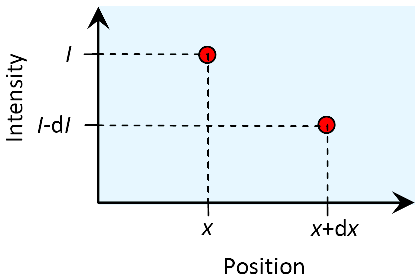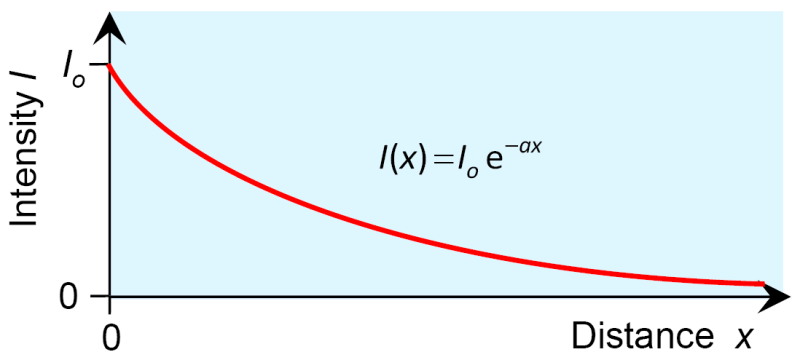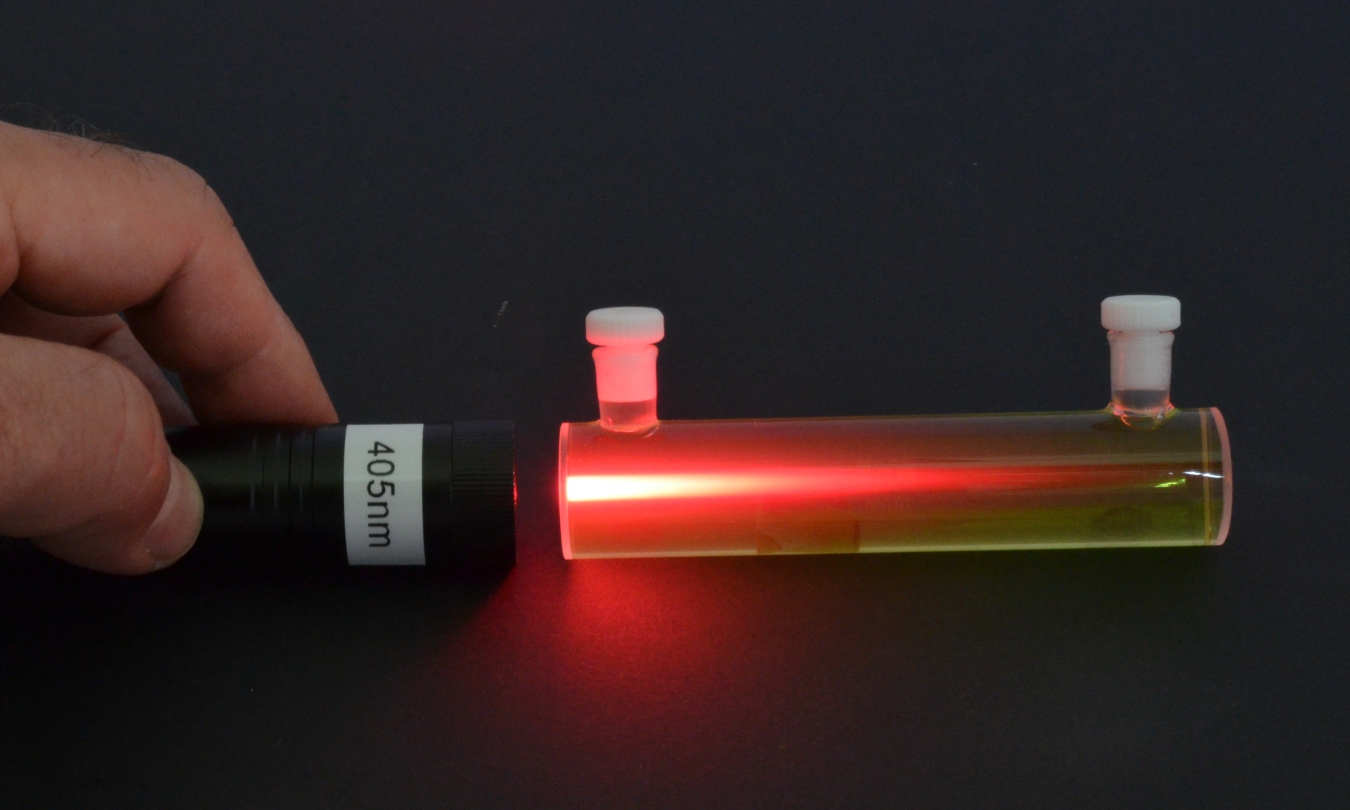4. Absorption et diffusion
Quelques mathématiques
Nous commençons par nous concentrer sur l'échelle la plus petite - infinitésimale - à l'intérieur d'une substance absorbante qui est éclairée du côté gauche. La lumière a une intensité de au point . Seulement un pas infinitésimal plus loin, au point , l'intensité a diminué d'une quantité infinitésimale , de sorte qu'elle peut être décrite comme .

La décroissance est supposée proportionnelle à et :
En outre, la diminution dépend des caractéristiques d'absorption de la substance. Ces propriétés particulières seront caractérisées par le coefficient d'absorption a, ce qui fait de la proportionnalité une équation :
Par transformation, on obtient l'équation différentielle suivante :
qui doit maintenant être résolue (ou : intégrée). Lorsqu'elle est formulée avec des mots, la solution est facile à trouver :
"Interrogée est l'intensité
, ..."
à gauche : "...dont la différenciation par rapport à
..."
à droite : "... aboutit à
avec le facteur supplémentaire
."
La fonction capable de faire cela est la fonction exponentielle : Elle persiste lorsqu'elle est dérivée ou intégrée. Une approche possible pour résoudre le problème est donc la suivante :
ce qui conduit à l'équation différentielle initiale lorsqu'on la différencie par rapport à :
Par conséquent, l'équation exponentielle permet de trouver la solution.
Au point , l'intensité est égale à ((il s'agit de l'intensité au début, l'approche précédente donne pour la valeur 1), et doit être complétée sur le côté droit de l'équation. Cela conduit à la solution finale :

C'est la loi de Lambert : L'intensité de la lumière décroît exponentiellement à travers un milieu absorbant, la décroissance dépendant du coefficient d'absorption .
Source du spectre d'absorption de la chlorophylle a : PhotochemCAD. Le spectre montre le coefficient d'absorption molaire décadique, qui sera expliqué dans le supplément 4.1.
La dimension du coefficient d'absorption est une longueur inverse. Selon sa valeur, il peut être donné en différentes unités :
- pour l'atmosphère sans nuages, la plupart du temps en 1/km,
- pour les eaux, en 1/m,
- pour les matériaux fortement absorbants (par exemple, les points de pollution environnementale par le pétrole brut) en 1/μm.

